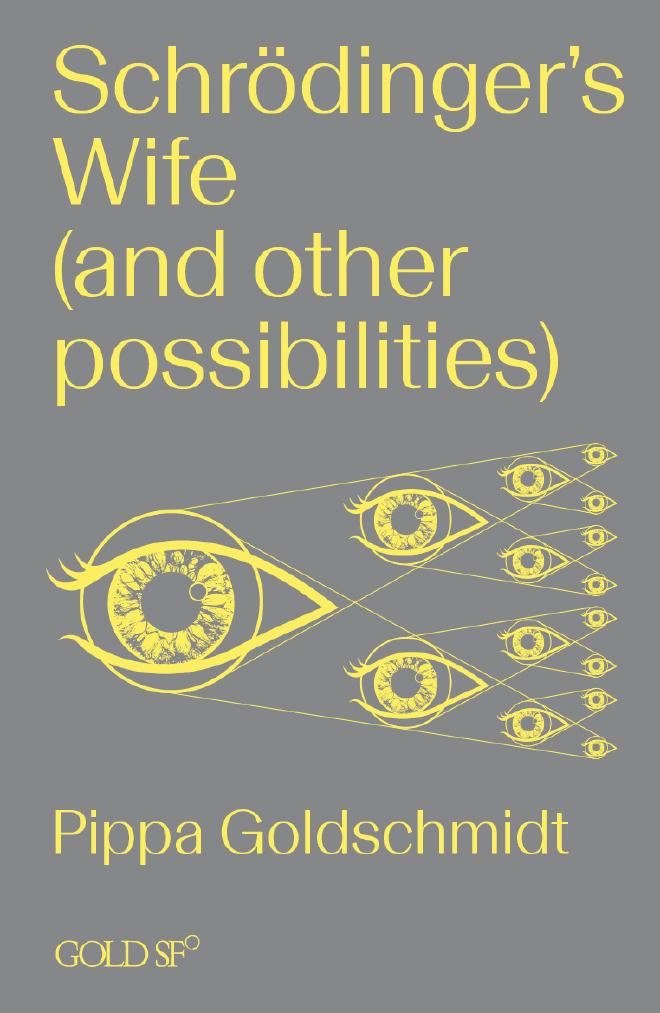
The theory has just been discovered, which is marvellous and a cause for celebration. But the theory is anxious because it’s been discovered by a woman, and it knows (of course it knows, it’s part of the eternal truth of the Universe) that consequently it will be forgotten for quite a few years. The theory is about symmetry, about space. It’s written in the language of cosmic time rather than human lifespans, so the theory can afford to hang around and get rediscovered at a later date. It’s not urgent. But even so, the theory would quite like to be known now so it could be taught to students, written up in textbooks, argued about at conferences. Even be the subject of a Brian Cox documentary. The theory thinks that would be cool. (From “What The Theory Worries About”)
The nuclear physicist Lise Meitner discovers the secrets of nuclear fission while fleeing from the Nazis. The biologist Margaret Bastock must figure out the impact of genes on behaviour while coping with post-war expectations of women’s own behaviour. Scientists from East and West Germany stationed at opposite sides of Antarctica experience their own fall of the Berlin Wall. In the title story, the quantum physicist Erwin Schrödinger’s wife Anny uses his theory to get her revenge on her philandering husband. A scientific theory worries about being discovered by a woman, and a resident in a special institution extrapolates the history of the universe from a piece of toast.
My second short story collection was shortlisted for the British Science Fiction Association Awards in 2024. It’s published by Goldsmiths Press under their Gold SF imprint. In the UK it’s available in most bookshops, including Waterstones. For readers in the US the book is distributed by MIT Press. The opening story ‘Alternative Geometries’ is available on the MIT Press Reader. And I’ve written an accompanying essay ‘Unseen Possibilities: On Entanglement and the story of Schrödinger’s Wife’, discussing the difficulties of writing about the Schrödingers which can be found at Glasgow Review of Books.
Reviews#
“Although Goldschmidt is clearly fascinated by the unappreciated women of science, she also offers glimpses of the (often female) domestic work that makes scientific research possible. Office cleaners, waitresses, telegraph operators, and wives take up just as much space in Goldschmidt’s stories as trained scientists. Many of the stories mimic the conventions of scientific writing, but she never loses sight of the humanity of her characters. Instead, her precise and technical prose works reflexively to interrogate the violence and erasures of mainstream science. Taken collectively, this engrossing collection creates a mosaic of situated perspectives on science that is surely more than the sum of its parts.” Libby O’Neil, Full Stop
“This is a stunning collection with tales that take science and remind us of the human stories that build and support it every day. It shows us the darker side of exploration but also the way it empowers people to live the lives and careers they want even in the face of our petty human biases and squabbles. It is very strongly recommended!” Matt Cavanagh, Runalong The Shelves
“Despite the lack of the explicitly fantastical the stories in this volume are definitely speculative and, above all, fabulous, in all senses of the word. It is not just that they are neatly constructed and thought provoking but that, above all, they are immensely entertaining. This is by far one of the best collections I’ve read in a long, long while.” Steven French, SF2Concatenation
“I didn’t quite shove all the other reviewers out of the way to get to this, but it was a near thing… That’s the most appealing thing about this collection for me: the layers and layers of identity. Some come from outsiders and some from metaphor, but all of them are ways of welcoming readers into the stories of science, and what they find there will always be worth it.” Octavia Cade, Strange Horizons
“Goldschmidt employs a collage technique, with many of the stories composed of short scenes and images. Her use of form can be delightfully inventive.” Philip Womack, Times Literary Supplement